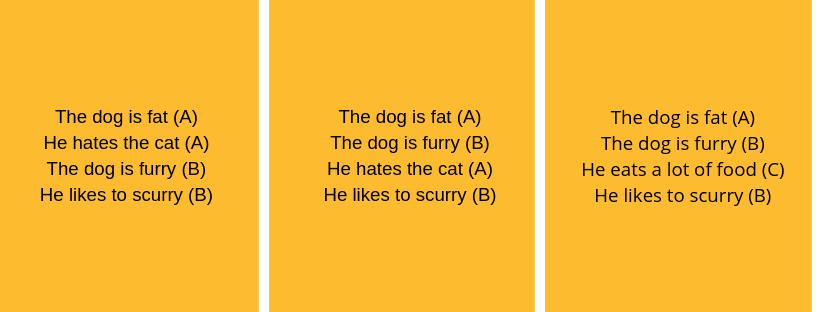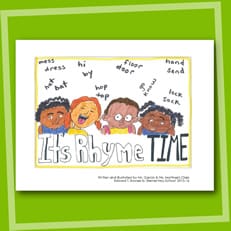 Yay! It’s National Poetry Month! Teaching poetry to young elementary school students might seem intimidating at first, but it doesn’t have to be. Your young students are probably already familiar with some forms of poetry through exposure to nursery rhymes, limericks, music and more. The goal should be to inspire students to create engaging poems that not only help them develop their technical writing skills, but also foster creativity!
Yay! It’s National Poetry Month! Teaching poetry to young elementary school students might seem intimidating at first, but it doesn’t have to be. Your young students are probably already familiar with some forms of poetry through exposure to nursery rhymes, limericks, music and more. The goal should be to inspire students to create engaging poems that not only help them develop their technical writing skills, but also foster creativity!
3 Poetry Project Ideas for Elementary School Students for National Poetry Month
Poetry is so important to incorporate into the classroom because it helps students learn a different style of writing outside of prose and can also offer a healthy outlet for expressing emotion. Here are 3 poetry project ideas to bring into your classroom for National Poetry Month and create a classbook.
Poetry Project #1: Have your students write an acrostic poem about themselves using the letters of their names
This classic project idea is a great way to introduce students who are in lower grade levels to poetry. You can show your students examples of acrostic poems or write one using your name. We also suggest adding words that describe personality traits to your spelling lists while you and your students work on this project.
Acrostic poems are fantastic for lower grade levels who may have not grasped how to form complete sentences yet. For older elementary students, challenge them to choose words that are out of the ordinary to create their acrostic poems.
PROJECT IDEA
Have your students write down words that describe them. These do not have to start with the letters in their name. Then have them look up synonyms for those words that do start with the letter they are looking. This will help expand their vocabulary and also give them a little introspection as to who they are as a young person. After your students have discovered the words that they will use in their acrostic poem, have them draw a picture of themselves surrounded by things that represent the words they chose. This project can easily be turned into a classbook that your students can look back on and see how their personality evolves over the years!
Poetry Project #2: Have your students choose a free verse poem and write about what each line of the poem means.
Free verse poetry may be one of the best ways to bring poetry into the classroom because it is less structured and less restrictive style-wise, but it challenges students to analyze a descriptive piece of writing different from what they normally read.
Most free verse poems use extremely descriptive words and even onomatopoeia occasionally to evoke emotion from the reader or listener. Generally, the stanzas in free verse poems are short and impactful but occasionally, they can be lengthy.
Show your students examples of a few free verse poems (this is a good resource for well-known free verse poems). Have them analyze the words used and see how those words make them feel. If your students are in 1st or 2nd grade you can show them the free verse poems on this site that are a bit easier to digest.
PROJECT IDEA
Either have your students choose their own free verse poem or they can choose from a list you have created. After they have chosen their poems, have them write about what they think each line means and how it made them feel. Your students can then create an illustration that depicts what is in the poem and the emotion they feel. Send in your class’ poem analysis and illustrations to us and get your classbook published! After the books arrive, you can have a poetry slam classbook party where all of your students read their chosen poems to the class. This is a great idea because your entire class will be exposed to famous pieces of writing they may have not come across otherwise!
Are you Enjoying this Content?
Poetry Project #3: Have your students describe their favorite animal in a rhyming poem
Rhyming poems are probably the type of poetry your students are most familiar with. You will want to have a short lesson on rhyme scheme.
A “rhyme scheme” is a way of describing the pattern of “end” in a poem. Each new sound at the end of a line is given a letter, starting with “A,” then “B,” and so on. If an end sound repeats the end sound of an earlier line, it gets the same letter as the earlier line.
Here are three slightly different poems, each with a different scheme. The first is AABB, the second is ABAB, and the third is ABCB).

You can have your students individually mark up a rhyming poem in this way or show them some examples as a class.
PROJECT IDEA
After your students have figured out how a rhyming poem is structured, have them create their own poem about their favorite animal. You might even have students team up with a partner to help them come up with words that rhyme. Have your students then draw the animal that their poems describe and create a wonderful classbook, there is a good chance that this is the first poem they have had published so it is something they can cherish forever.
Additional resources
If you’re looking for more ideas to inspire your students to write, visit our online teacher’s lounge. We’re here to support you and your desire to help your students love writing.
Be sure to sign up to receive your free classbook publishing kit while you’re on our site. Your students will thank you when they see their very own classbook!






